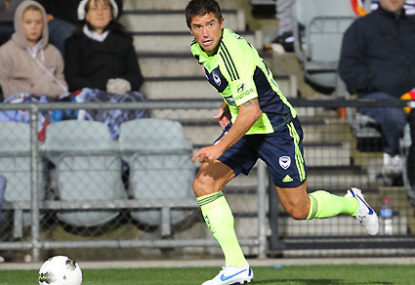Dr. Stew
new author
Roar Rookie

The number 10 shirt is the most coveted prize at the beginning of any season. The number 10 shirt represents a player of elegance and class; a player that reads the game exceptionally well, and delivers defence-splitting passes with majestic ease.
The number 10 is a creative genius, unlocking attacking options that others just cannot see. But for all the kids that scramble for the number 10 shirt, Australia has yet to produce a world-class ‘number 10′.
Players such as Kewell, Viduka, Johnston, Grella, Emerton and Neill are all (or have been) world-class players. Of this, there is no doubt.
However, none of these really constitute a number 10. Sure, Harry probably comes close, but as with the others, he plays a position that relies more heavily on physical and technical attributes than on creativity, game-reading, and decision-making. All of these characteristics are typically associated with the number 10.
Why is this so? Well, perhaps (as unlikely as it seems) research in developmental neuropsychology can provide the answer. Don’t be put off by the fancy name – the principles are easy to follow.
Studies show that brain structure and the associated brain functions are highly genetic. Yet, they are also highly influenced by one’s environment. Yes, these are both obvious, however, the complicated interplay between genetics and the environment is starting to be untangled.
Studies of brain development in children aged between 5 and 20 years of age tell us some very important things about how to develop a ‘number 10′.
The sensory and motor skill areas of the brain (physical skills) are heavily influenced by genetics early in life. This means that physical and technical training are more important later in adolescence when the ‘environment’ has a greater impact, and thus a greater return on physical training.
Contrastingly, the higher-level association areas such as creativity and decision-making are heavily influenced by genetics later in adolescence. This means that environmental influences have a very large impact early in life, and will have an ever-decreasing impact as kids get older.
The critical period for teaching these skills seems to be between 5 and 10 years of age. The implication is that teaching the ‘number 10′ skills to a seven-year-old is much easier than teaching them to a 20-year-old.
If we want to develop a number 10, it is crucial that we teach young footballers the higher-order skills such as creativity and game-reading. By the time they reach adolescence, genetics have kicked in and the return on such training is ever-decreasing.
Does the Australian football culture and coach education system promote the teaching of such skills at this age? I would argue that it does not, and this is the reason that Australia has never produced a world class ‘number 10′ in the mould of Zidane, Totti or Kaka.
We have to reverse the order in which we are teaching these skills to young players. It would make much more sense to teach the ‘number 10′ skills early when children are more easily moulded, and then refine physical skills at a later age when these are also more “trainable”.
We also need a culture change, where creativity and game-reading are valued more highly than technical and physical skills at an early age. Our current focus on technical and physical skills at ages 5-13 just won’t suffice.
This makes great sense, but it’s easier said than done!
A look at the current FFA curriculum will show you that the “skill acquisition phase” occurs at ages 9 through 13. In this phase, it is stipulated that players be taught the technical foundations of the game – running with the ball, striking the ball, and first touch.
Undoubtedly, these are important skills. At age 13 to 16, the curriculum outlines a “game development phase” which includes the development of higher-level processes such as insight and decision-making through game-related training.
However, the way that our neuropsychological system works determines that these skills be taught in the opposite order.
If we are looking to coach a real ‘number 10′, let’s first look at what we teach, and when we teach it.